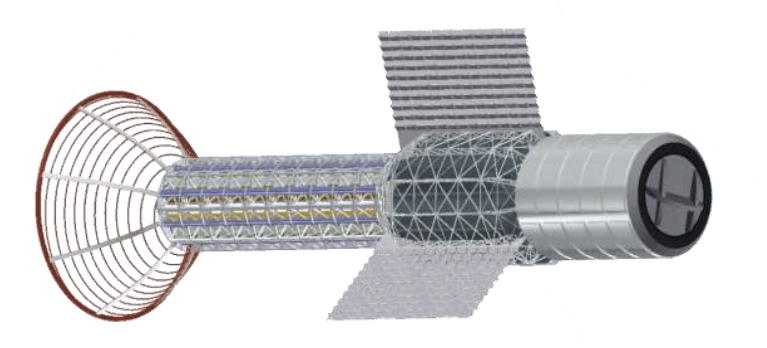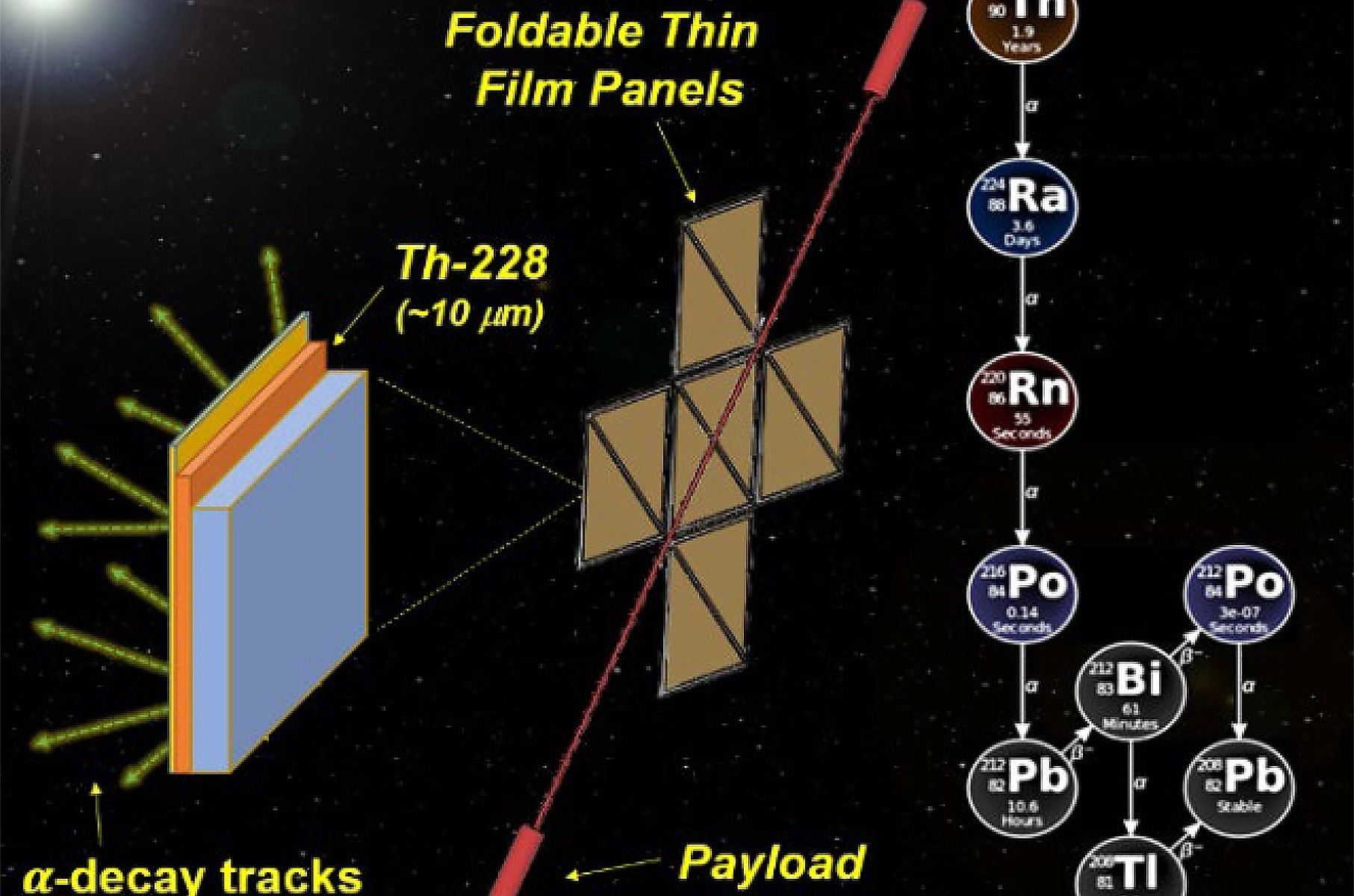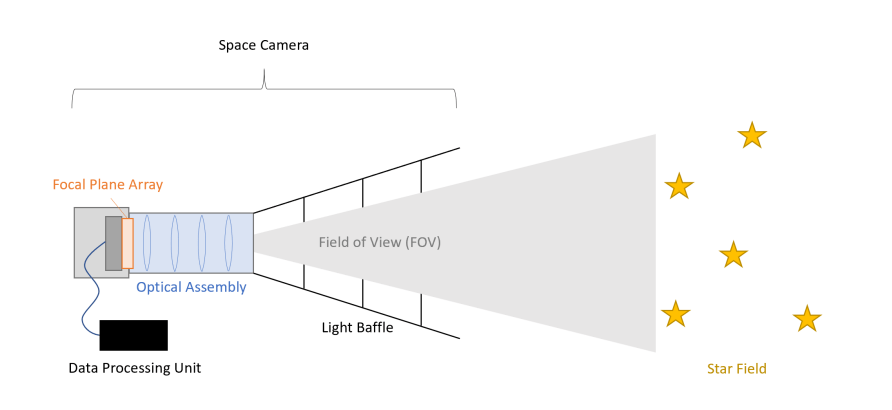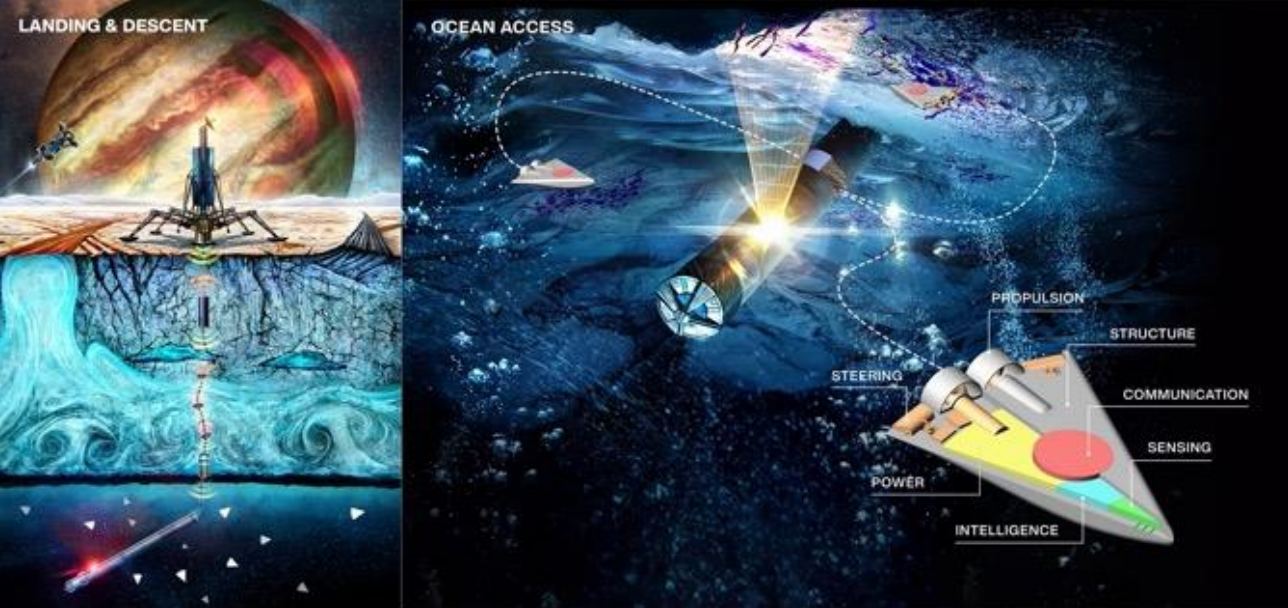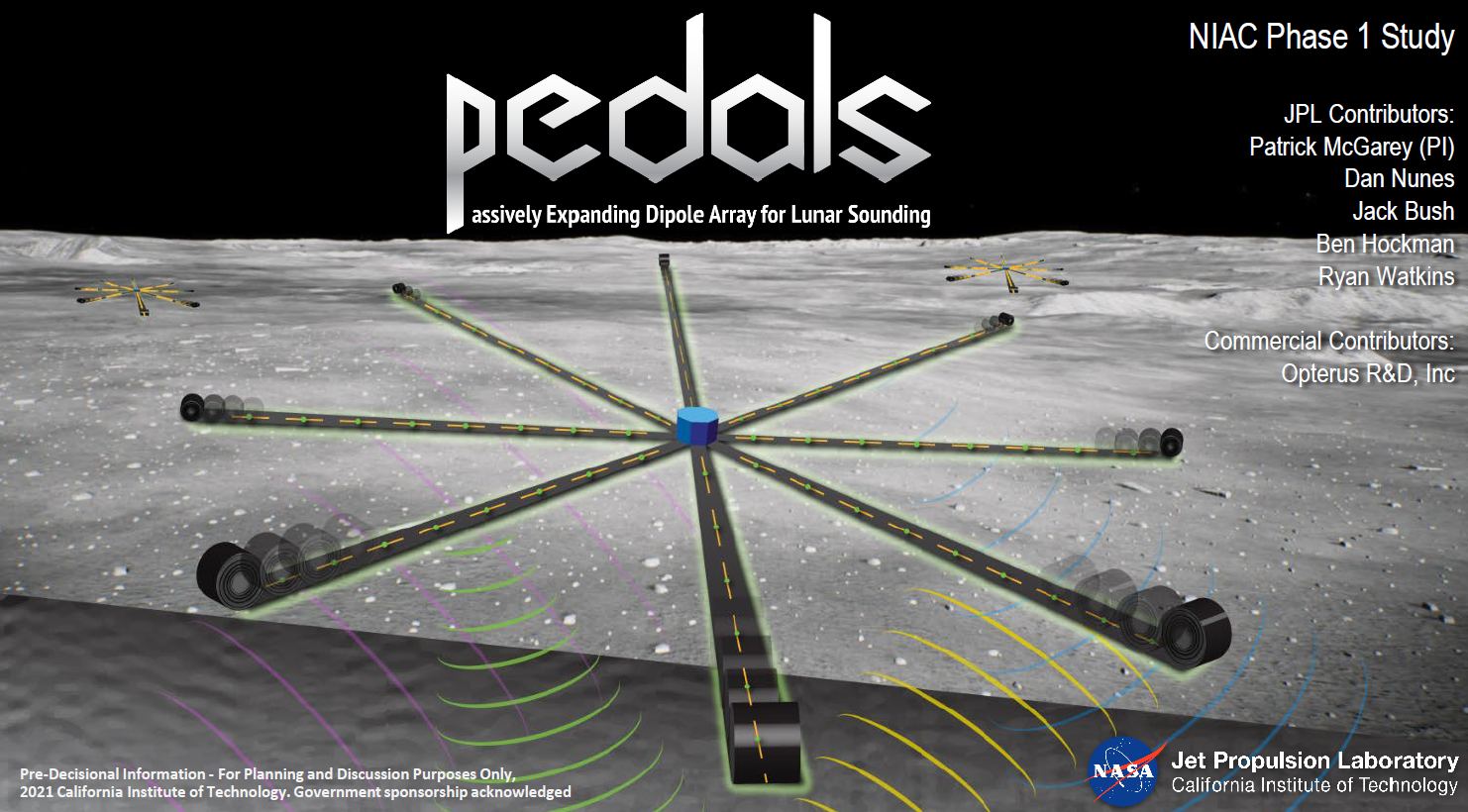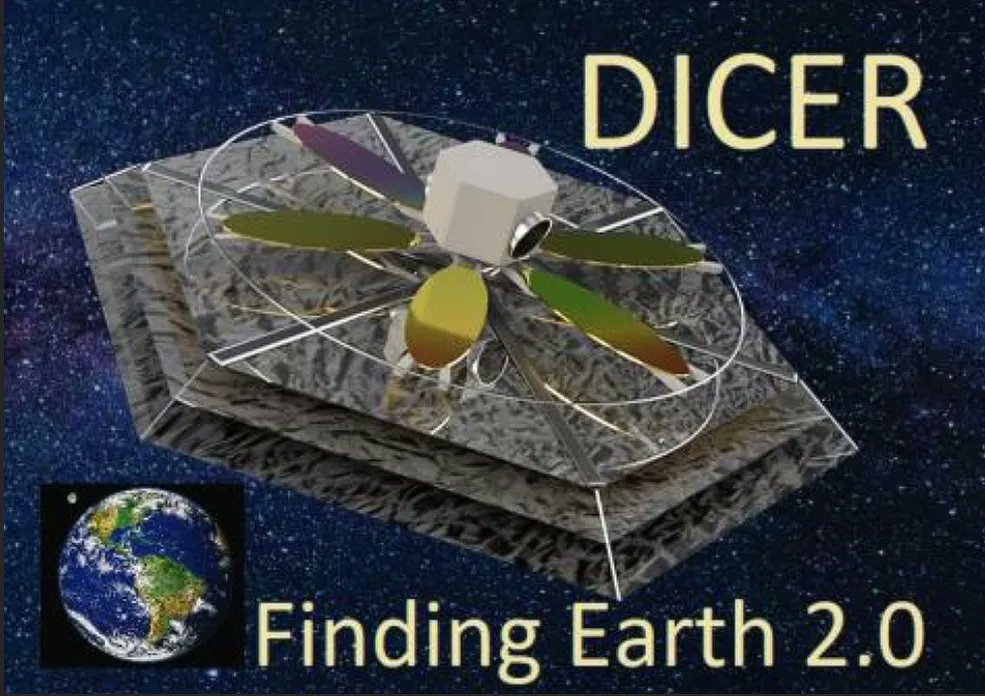We’ve reported on a technology called pulsed plasma rockets (PPRs) here at UT a few times. Several research groups have worked on variations of them. They are so popular partly because of their extremely high specific impulse and thrust levels, and they seemingly solve the trade-off between those two all-important variables in space exploration propulsion systems. Essentially, they are an extremely efficient propulsion methodology that, if scaled up, would allow payloads to reach other planets in weeks rather than months or years. However, some inherent dangers still need to be worked out, and overcoming some of those dangers was the purpose of a NASA Institute for Advanced Concepts (NIAC) project back in 2020.
Continue reading “Thermal Modeling of a Pulsed Plasma Rocket Shows It Should Be Possible To Create One”NASA Invests in New Nuclear Rocket Concept for the Future of Space Exploration and Astrophysics
In the coming years, NASA plans to send several astrobiology missions to Venus and Mars to search for evidence of extraterrestrial life. These will occur alongside crewed missions to the Moon (for the first time since the Apollo Era) and the first crewed missions to Mars. Beyond the inner Solar System, there are ambitious plans to send robotic missions to Europa, Titan, and other “Ocean Worlds” that could host exotic life. To accomplish these objectives, NASA is investing in some interesting new technologies through the NASA Innovative Advanced Concepts (NIAC) program.
This year’s selection includes solar-powered aircraft, bioreactors, lightsails, hibernation technology, astrobiology experiments, and nuclear propulsion technology. This includes a concept for a Thin Film Isotope Nuclear Engine Rocket (TFINER), a proposal by senior technical staff member James Bickford and his colleagues at the Charles Stark Draper Laboratory – a Massachusetts-based independent technology developer. This proposal relies on the decay of radioactive isotopes to generate propulsion and was recently selected by the NIAC for Phase I development.
Continue reading “NASA Invests in New Nuclear Rocket Concept for the Future of Space Exploration and Astrophysics”NASA Selects Bold Proposal to “Swarm” Proxima Centauri with Tiny Probes
Humans have dreamed about traveling to other star systems and setting foot on alien worlds for generations. To put it mildly, interstellar exploration is a very daunting task. As we explored in a previous post, it would take between 1000 and 81,000 years for a spacecraft to reach Alpha Centauri (of which Proxima Centauri is considered a companion) using conventional propulsion (or those that are feasible using current technology). On top of that, there are numerous risks when traveling through the interstellar medium (ISM), not all of which are well-understood.
Under the circumstances, gram-scale spacecraft that rely on directed-energy propulsion (aka. lasers) appear to be the only viable option for reaching neighboring stars in this century. Proposed concepts include the Swarming Proxima Centauri, a collaborative effort between Space Initiatives Inc. and the Initiative for Interstellar Studies (i4is) led by Space Initiative’s chief scientist Marshall Eubanks. The concept was recently selected for Phase I development as part of this year’s NASA Innovative Advanced Concepts (NIAC) program.
Continue reading “NASA Selects Bold Proposal to “Swarm” Proxima Centauri with Tiny Probes”Lost In Space? Just Use Relativity
One of the hardest things for many people to conceptualize when talking about how fast something is going is that they must ask, “Compared to what?” All motion only makes sense from a frame of reference, and many spacecraft traveling in the depths of the void lack any regular reference from which to understand how fast they’re going. There have been several different techniques to try to solve this problem, but one of the ones that have been in development the longest is StarNAV – a way to navigate in space using only the stars.
Continue reading “Lost In Space? Just Use Relativity”A Swarm Of Swimming Microbots Could Be Deployed To Europa’s Ocean
Europa and other ocean worlds in our solar system have recently attracted much attention. They are thought to be some of the most likely places in our solar system for life to have developed off Earth, given the presence of liquid water under their ice sheathes and our understanding of liquid water as one of the necessities for the development of life. Various missions are planned to these ocean worlds, but many suffer from numerous design constraints. Requirements to break through kilometers of ice on a world far from the Sun will do that to any mission. These design constraints sometimes make it difficult for the missions to achieve one of their most important functions – the search for life. But a team of engineers from NASA’s Jet Propulsion Laboratory think they have a solution – send forth a swarm of swimming microbots to scour the ocean beneath a main “mothership” bot.
Continue reading “A Swarm Of Swimming Microbots Could Be Deployed To Europa’s Ocean”Deploying a Huge Antenna On The Moon Could Study Its Insides
Understanding what lies under the lunar surface could be critical to future exploration efforts. A series of missions have already mapped some parts of the sub-surface of the Moon. Still, few have delved deep inside, where large lava caverns or potentially valuable water or mineral deposits may lie. But that might be about to change. NASA’s Institute for Advanced Concepts (NIAC) supplied funding to a novel technology developed by a team at its Jet Propulsion Laboratory (JPL) that could solve the long-standing problem of seeing what lies within the Moon.
Continue reading “Deploying a Huge Antenna On The Moon Could Study Its Insides”A Helicopter is Going to Titan. Could an Airplane be Next?
What are the hydrocarbon seas on Titan really like? While the upcoming Dragonfly helicopter mission to Saturn’s hazy and frigid moon should arrive by 2034 to explore Titan’s atmosphere, the need remains for a mission that could study the moon’s mysterious seas and lakes, filled with liquid hydrocarbons.
But, how about an aircraft that could study both the seas and skies of Titan?
A new mission concept that received funding from NASA’s Innovative Advanced Concepts (NIAC) Program is called “TitanAir,” and features a flying boat, known as a laker. The laker would be outfitted with numerous instruments to sip and taste both air and liquid, all while soaring and sailing, seamlessly transitioning between navigating through Titan’s atmosphere and gliding across its lakes, much like a seaplane on Earth.
Continue reading “A Helicopter is Going to Titan. Could an Airplane be Next?”An Extremely Lightweight Fission Rocket Could Reach the Solar Gravitational Lens in 15 Years
Novel propulsion ideas for moving around space seem like they’re a dime a dozen recently. Besides the typical argument between solar sails and chemical propulsion lies a potential third way – a nuclear rocket engine. While we’ve discussed them here at UT before, NASA’s Institute of Advanced Concepts has provided a grant to a company called Positron Dynamics for the development of a novel type of nuclear fission fragment rocket engine (FFRE). It could strike the balance between the horsepower of chemical engines and the longevity of solar sails.
Continue reading “An Extremely Lightweight Fission Rocket Could Reach the Solar Gravitational Lens in 15 Years”If an Earthlike Planet is Within 30 Light-Years, This Space Telescope Will Find it
There has long been a limiting factor in the development of space-based telescopes – launch fairings. These capsules essentially limit the overall size of the mirrors we are able to launch into space, thereby limiting the sensitivity of many of those instruments. Despite those limitations, some of the most successful telescopes ever have been space-based, but even with all the advantages of being in space, they have so far failed to find an exoplanet in the habitable zone of a Sun-like star. Enter a new project called the Diffractive Interfero Coronagraph Exoplanet Resolver (DICER), which recently received funding from NASA’s Institute for Advanced Concepts (NIAC).
Continue reading “If an Earthlike Planet is Within 30 Light-Years, This Space Telescope Will Find it”Future Space Telescopes Could be 100 Meters Across, Constructed in Space, and Then Bent Into a Precise Shape
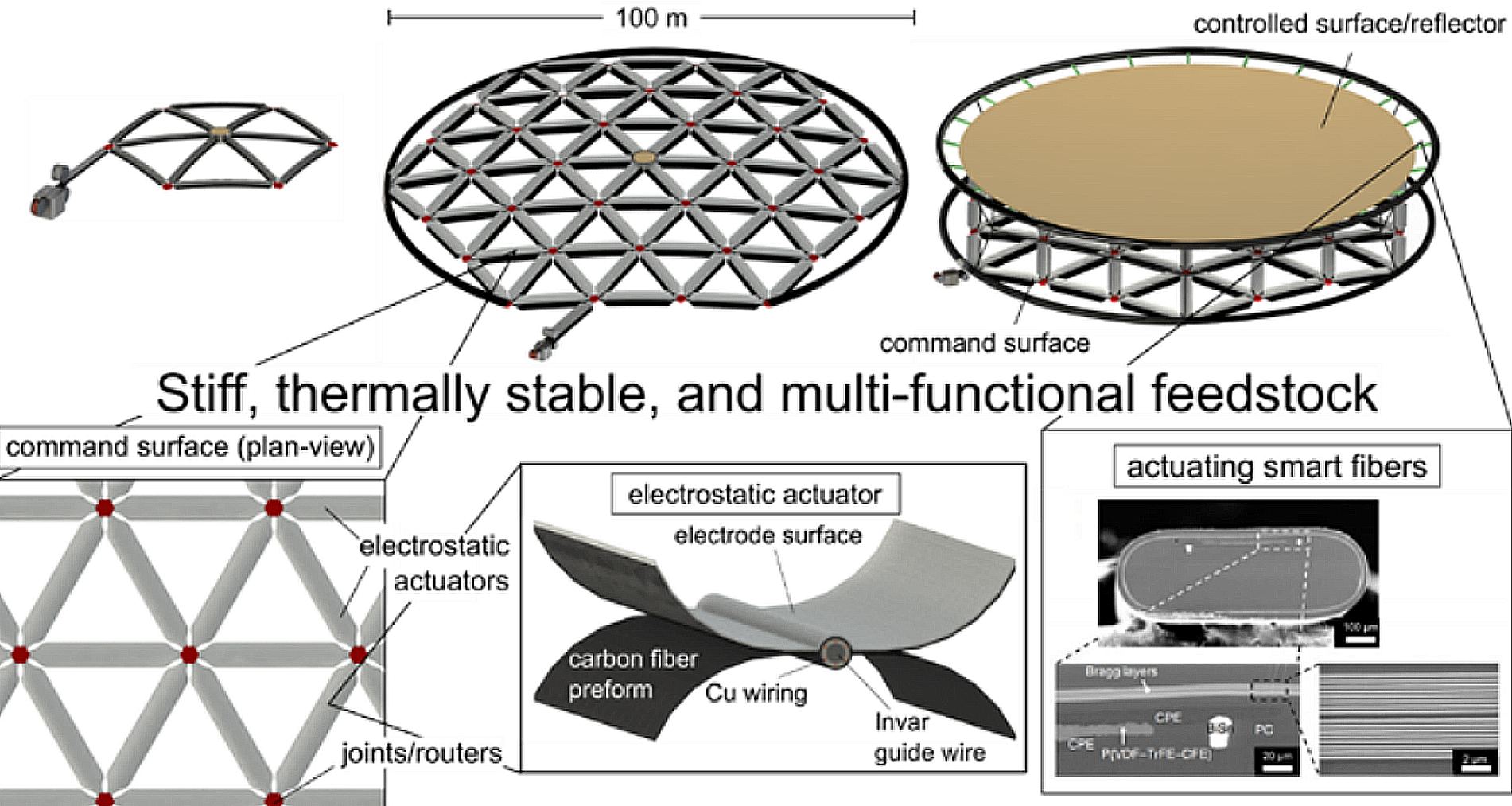
It is an exciting time for astronomers and cosmologists. Since the James Webb Space Telescope (JWST), astronomers have been treated to the most vivid and detailed images of the Universe ever taken. Webb‘s powerful infrared imagers, spectrometers, and coronographs will allow for even more in the near future, including everything from surveys of the early Universe to direct imaging studies of exoplanets. Moreover, several next-generation telescopes will become operational in the coming years with 30-meter (~98.5 feet) primary mirrors, adaptive optics, spectrometers, and coronographs.
Even with these impressive instruments, astronomers and cosmologists look forward to an era when even more sophisticated and powerful telescopes are available. For example, Zachary Cordero
of the Massachusetts Institute of Technology (MIT) recently proposed a telescope with a 100-meter (328-foot) primary mirror that would be autonomously constructed in space and bent into shape by electrostatic actuators. His proposal was one of several concepts selected this year by the NASA Innovative Advanced Concepts (NIAC) program for Phase I development.

